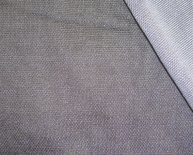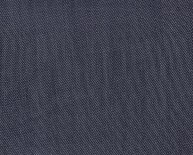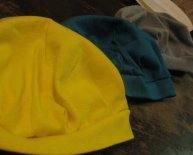
Double Knit Polyester
 Remember the 1977 film “Saturday Night Fever”—disco music coupled with young dancers clothed in garish shades, bell-bottoms, wide lapels and shirt collars the size of hang gliders? Much of it made from polyester fabric.
Remember the 1977 film “Saturday Night Fever”—disco music coupled with young dancers clothed in garish shades, bell-bottoms, wide lapels and shirt collars the size of hang gliders? Much of it made from polyester fabric.
Fashion (thankfully) has changed a bit since then, and so have plastic fabrics. Instead of the somewhat coarse fabric of many leisure suits of that era, polyester fabric today is generally soft and smooth, whether used in fine apparel or active wear.
So … did something happen to polyester clothing since the ’70s?
The History of Polyester Fabric
First, a bit of history. (Hey, I’m a professor.) Polyester plastic was discovered in a DuPont lab in the late 1930s, but scientist W. H. Caruthers set it aside to work on his newly discovered nylon. A group of British scientists applied Caruthers’ work in 1941 and created the first commercial polyester fiber in 1941 called Terylene. DuPont purchased the legal rights in 1946 and created another polyester fiber: the now familiar Dacron. Eastman Chemical created another polyester fiber in 1958 called Kodel.
The polyester fabric market rapidly expanded, to include by the late ’70s the ubiquitous and much maligned double knit polyester pantsuits, leisure suits, golf pants and other fashion atrocities.
What is Polyester Fabric?
Like other polymers, there are many variations of “polyesters.” The most popular is polyethylene terephthalate, or PET, which is widely used in both packaging and clothing. Polyesters are defined as (snooze alert!) long-chain polymers chemically composed of at least 85 percent by weight of an ester and a di-hydric alcohol and a terephthalic acid. The term refers to many (poly) esters (the building block compound—many fats and fragrances are esters).
Plastics makers produce polyethylene variations under distinctive trade names—thus Terylene, Dacron and Kodel mentioned above.
To make polyester into fibers, the plastic is melt spun, meaning the plastic is heated and forced through spinnerets into fibers (a spinneret is essentially an industrial mechanism similar to a spider’s silk spinning organs). The fibers are stretched to five times their length, typically combined into yarn and then weaved or knitted into polyester fabrics.
Regardless the variation or the decade, polyester fabrics always have been strong, resistant to stretching and shrinking, easy to clean, quick drying and resistant to wrinkles, mildew and abrasions … a perfect combination for clothing.
How Polyester Fabric Has Changed Through the Years
So why did some ’70s leisure suit fabrics feel different than today’s polyesters? Mostly it was the double knit nature of the polyester fabric used in those suits and the relatively larger size of the fibers.
In reality, there were many wonderful polyester fabrics in the ’70s. The choice of fabric rested with the garment maker, who often wanted to keep down costs. And since trends during the economically challenging late ’70’s were toward saving money and living less formally, many Americans were attracted to the very inexpensive leisure suit. (I never was. I swear.)
Polyester Today: A Modern Fabric for Savvy Consumers
Today’s consumer (mercifully) demands better. And innovations in technology continue to improve polyester fiber and fabric through:
- Refinements in production of the resin (usually highly guarded trade secrets);
- Changing the shape of the spinneret, which changes the shape and feel of the fiber;
- Stretching the polyester fiber beyond the typical five times its original length;
- Crimping the polyester fiber to create more texture and bulk for insulating and elasticity;
- Various additives that alter the polyester fabric’s sheen, increase colorfastness, improve drape and more; and
- The creation of microfiber, extremely fine fibers approximately 1/100 the diameter of human hair that are used in all sorts of fabrics and clothing (and many other applications).
The cultural backlash against the leisure suit (and disco, for that matter) struck a blow to the image of polyester fabric. However, studies done in the early ’80s found that nearly nine out of 10 Americans could not differentiate between polyester and fabrics made with cotton, wool and silk.
Frankly, people have become more interested in the look, feel and cost of fabrics and clothing, not necessarily what they are made of. Constantly improving quality coupled with a “Say Yes to polYESter” marketing campaign led to a strong comeback for the once disparaged material.
Polyester Fabric Trends and Innovations
And it’s not simply for casual clothes anymore. Most Americans probably don’t know this, but polyester and other plastic based fabrics are used throughout the high-end fashion world. Instead of identifying the materials, designers often use euphemisms such as “technical fabrics” and “techno fabrics.” Whatever. These fabrics are made with plastics, one of which is so light that a bolt of fabric weighs less than the cardboard roll it’s delivered on.
Similar polyester and other plastic based fabrics have taken the sporting and outdoor worlds by storm. Wander through any sporting goods store or outdoor outfitter and check the tags—nearly all plastics.

















